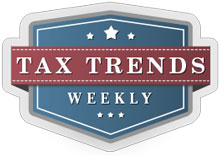The Negatives of Obamacare Become More Clear
In recent months, prominent government officials have publicly expressed skepticism about the implementation of the Patient Protection and Affordable Care Act (PPACA or “Obamacare”), the health care act signed into law by President Obama in March of 2010. Democratic Senator Jay Rockefeller of West Virginia, a key contributor to the PPACA, stated that the bill was “probably the most complex piece of legislation ever passed by the United States Congress” and “is just beyond comprehension.” Democratic Senator Max Baucus of Montana, another key proponent of the bill, sharply warned Health and Human Services Secretary Kathleen Sebelius that he sees a “train wreck coming down” with the implementation of the bill. Henry Chao, the government official in charge of implementing the PPACA’s complex insurance exchanges, has said of the issue, “I’m pretty nervous . . . Let’s just make sure it’s not a third-world experience.”
In addition to the problems the Department of Health and Human Services faces in implementing insurance exchanges and promulgating the vast number of regulations required by the PPACA, the economic problems of Obamacare become more and more clear as October 1, 2013 -the date state health insurance exchanges are supposed to be open for enrollment- approaches. The first is “sticker shock,” or the surprise over the size of the premium increases resulting from the PPACA. Because PPACA prohibits the extent to which insurers may charge old and sick people for the additional health risks such people have, it was a foregone conclusion that insurance rates for healthy people would rise considerably as a result of Obamacare. But the magnitude of the premium increase is startling. For example, the Wall Street Journal, reporting on a study by the consulting firm Oliver Wyman, single adults earning between 300 and 400 percent of the federal poverty level will see rate increases averaging 46 percent, even after the PPACA’s tax subsidies for health insurance are taken into account.
A second problem is related to the first. Employers, faced with rising health care premiums, are likely to adjust their workforces and maximize the number of employees working under 30 hours. Thirty hours is the threshold for “full-time” work under the PPACA; an employer with a certain number of full-time employees must offer health insurance or pay a substantial fine. As a result, employers have an incentive to move workers to part-time status. This reaction by employer is particularly disturbing considering the persistently high number of “under-employed” (people who work part-time but desire to work full-time) in the U.S. since the Great Recession.

